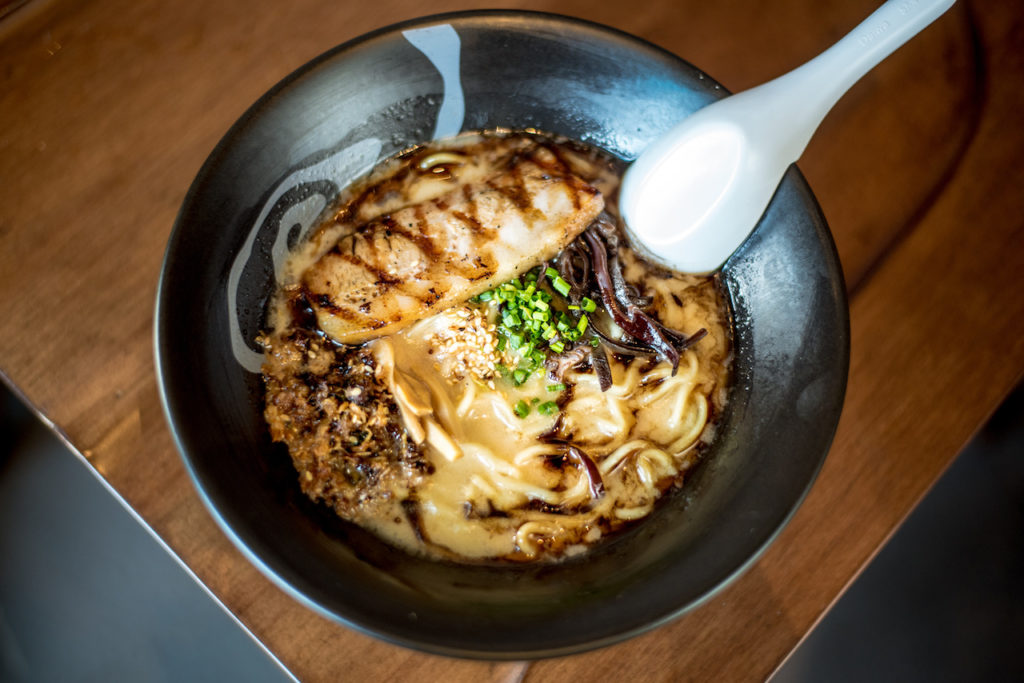The ramen house owner owes his success to this belief
Ryan Cruz sticks to what he knows best. And he has done so for six years, the same time his restaurant Mendokoro Ramenba (his other brands include Kazunori and Yushoken) has been running successfully for.
All along, his whole approach has been to impress someone with something simple and done correctly. It’s a straightforward and basic rule but not the easiest to implement especially when guests have their own set of preferences.
“A lot of us, growing up, always hear that all customers should be treated well,” Cruz says. “But they’re not always right. If they are then you’re not doing your job properly because they know better than you do.”

Over the years, the staff at Mendokoro Ramenba had to fend off so many customers about having no utensils, not allowing food to be taken out, and not serving any dessert. “We had to explain it to them each time. I had so many people telling to my face that we wouldn’t last six months. And that we’re arrogant,” he says.
Cruz recalls one incident that involved a dine-in guest from the United Kingdom who argued with the manager and wouldn’t give up, forcing Cruz to call and settle the situation himself.
Customer: I’ve been led to believe that you wouldn’t allow my yolk to be taken out of my shio maze soba.
Cruz: Yes sir, I apologize. I’m sorry for disappointing you but that’s correct, I can’t allow that.
Customer: What would be the difference if I take the yolk out myself versus you telling the staff to take it out?
Cruz: The difference sir, and I hope you understand, is that I’m asking my staff to break my own rules, which I always try to teach them from the moment they come in—to protect the art form.
The customer continued to make all sorts of arguments but Cruz stood his ground. In the end, the Brit said that he was unhappy and never coming back to the restaurant. Cruz replied with regret and hope that he could eventually respect their beliefs.
Giving credit where it’s due
Cruz has always placed utmost value in the business because he recognizes the collective research, experience, and techniques his chefs have put in to come up with their beloved fare. The ramen looks so simple yet if one knew the amount of effort that goes into it, they will know that it is far from the simplest thing.
The broth alone requires 14 hours of non-stop stirring so it doesn’t burn, while the seasonings took decades to develop. The flour used for their noodles come from Japan where it is made with exact specifications—milled 10 times, more finely than bread flour, to have very low water content.
“I feel that [the business] is a gift by our chefs. If I haven’t taken care of this for the last six years, I would probably never get an opportunity like it again. This was handed to us on a platter. We have the luxury of learning from our chefs who are so unselfish. We attribute our success to them,” adding that “a lot of times when I feel that I’m getting burnt out with the amount of work, I shouldn’t think that I have to do this, I think that I get to do this.”
Preserving the art form at Mendokoro Ramenba
Cruz is definitely aware of the opportunity he has at hand, that’s why he treats it like gold and isn’t quick to resort to what the guest wants. “This is why we are who we are. We always value art over commerce.”
He has had customers shout at him, asking him to buy utensils from the nearest grocery store. To which he said absolutely no to. “Because it just wouldn’t be the same. How would you feel if you sat in front of a sushi chef and ate his food with a fork and a knife? I guess people don’t see ramen the same way. There’s not enough reverence for ramen as sushi.”
Not all hope is lost though as there are also people thanking him for being anal about everything and being true to how the Japanese specialty should be served and enjoyed. There are about 50,000 of them actually, all of whom go to any of their three branches, with some lining up for close to three hours just to have a bowl of their ramen. Add to that the six years of being in the business and remaining strong amid tough competition.
“You have to protect your art form and if you have customers who come in and try to take you away from your original intent (which they came to you in the first place), you have to learn how to say no because if it’s not a representation of you, then you should not serve it in the first place.”
Originally published in F&B Report Vol. 15 No. 4

